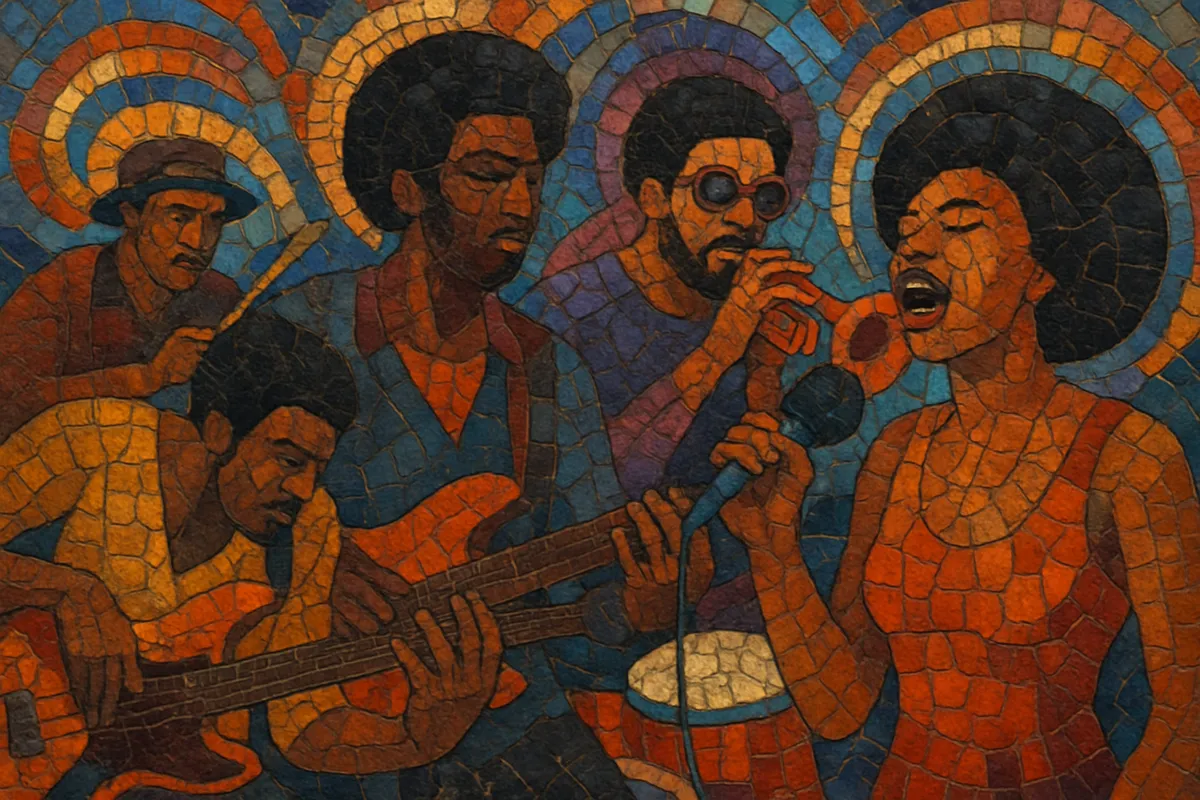Funk is a groove-centered African American popular music that prioritizes rhythm, syncopation, and collective interplay over harmonic complexity.
It typically features a strong emphasis on “the One” (the first beat of the bar), interlocking drum, bass, guitar, keys, and horn parts, and short vamp-based harmonic cycles built from dominant and extended chords. Signature sounds include tight drum grooves with 16th‑note syncopation, syncopated ostinato bass lines, percussive "chicken‑scratch" guitar, clavinet riffs, punchy horn stabs, and call‑and‑response vocals.
Emerging in the mid‑to‑late 1960s from soul, R&B, jazz, and gospel traditions—especially the rhythmic innovations of James Brown—funk became a foundational source for disco, hip hop, boogie, electro, house, and many modern pop and dance styles.
Funk coalesced in the United States as soul and R&B artists shifted focus from chord changes to rhythm and groove. James Brown’s bands (with drummers like Clyde Stubblefield and Jabo Starks, and bassist Bootsy Collins) codified the “on the One” concept, stripping harmony to vamps while expanding rhythmic syncopation. New Orleans R&B, second‑line rhythms, gospel call‑and‑response, jazz phrasing, and Afro‑Latin grooves informed the style’s polyrhythmic feel. Early landmarks such as “Papa’s Got a Brand New Bag” (1965) and “Cold Sweat” (1967) laid the blueprint.
Through the 1970s, funk diversified and flourished. Sly & the Family Stone fused rock and soul; The Meters defined lean, earthy New Orleans funk; Parliament and Funkadelic (P‑Funk) expanded funk into cosmic psychedelia; Tower of Power, Kool & the Gang, and Earth, Wind & Fire popularized tight horn arrangements and sophisticated ensembles. Funk’s dance-floor power fed directly into disco’s rise while remaining a distinct, grittier, groove-first idiom.
Post‑disco styles like boogie and electro‑funk brought drum machines, synth bass, and sequencers. The Minneapolis sound (Prince) blended synths, new wave textures, and hard funk. Go‑go (Washington, D.C.) kept live percussion at the center. Meanwhile, hip hop DJs and producers sampled funk drum breaks (e.g., the "Funky Drummer" break), making funk a cornerstone of rap production. Internationally, funk catalyzed Afrobeat (Fela Kuti) and permeated Japanese city pop and other scenes.
Neo‑soul, nu‑funk, and pop revivals re‑centered live grooves and retro sonics, while electronic producers continue to mine classic breaks and funk harmony. Contemporary artists fuse funk with house, modern R&B, and pop, reaffirming funk’s role as a perennial rhythm engine for global popular music.


